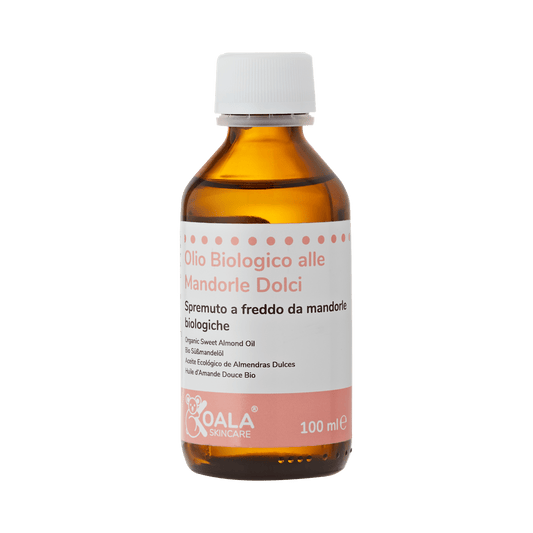New-mums frequently ask: How can I get back in shape after giving birth? What’s the best way? Where do I start? What are the best postpartum ab exercises to lose weight after pregnancy? We talk about this and more with Silvia Segala, a personal trainer and the mum behind MammaSportiva, who specialises in pregnancy and postnatal fitness.
Postnatal fitness: what you need to know
Wanting your body to be "as it was pre-pregnancy" is perfectly normal.
Pregnancy is a huge, albeit marvellous, transformation for a woman's body.
Once mum and baby transition from being "one inside the other" to "one beside the other", the new-mum needs to find her bearings. This psychological process is also true from a physical perspective, as mirrors are “instant” reminders of what our bodies have gone through.
A new-mum may not even recognise herself inside her new body. Despite the immense joy she feels as she holds her most precious and longed-for little baby in her arms, her body, and that unfamiliar belly, can cause new-mums to feel low.
If you are experiencing or have experienced such feelings and emotions, don't worry. It's totally normal, we all go through it. Every single one of us.
There are three very important things I can tell you to help you move past these feelings:
1) Don't stay tied to the past, life moves on
First and foremost, remember you can become even better than before. Often, we can become bound to the concept of “before”.
If we stop and think about it for a minute, we realise that it’s impossible: time moves forwards not backwards. Therefore, we should really use the word “becoming”, because “becoming” refers to a journey, a journey where we are the leading characters.
In many cases, the result we achieve is even much better than before pregnancy, and the reason why is scientific: postpartum hormones can generate a great deal of drive for new-mums. Many female athletes, for example, reach their highest performance after a pregnancy.
2) Change is not just physical, but also physiological
The second point is that the transformation is not only physical, but also anatomical, physiological. This aspect is crucial because it also touches on the real sphere of health. Your belly is not just a question of extra flab, weight that’s difficult to shift or excessive bloating. The abdominal area can often hide a much more serious problem: diastasis.
3) Each woman’s journey is unique
The third aspect is it’ll take however long is needed, as you take care of yourself and focus on your own journey.
Becoming a mum is an epiphany in every sense of the word. We are reborn with abilities we didn't know we had; we possess "magical powers" we have never experienced before.
The same is true with regards to our body. We listened to it throughout pregnancy, we continue to listen to it now, the signs it sends us, the needs it has.
And, above all, remember - no comparisons! It leads only to a form of self-sabotage, it does not prepare you positively for a journey of recovery, it’s detrimental to your mood, whether it involves comparing to your pre-pregnancy self, or to others.
Each woman’s journey is her own. The most important thing you can do is to embark and focus solely on yours.
With that in mind, let's now move on to the heart of our post looking at the key points!
Postpartum exercise: when can we start working out again?
There’s no one-size-fits-all answer. It entirely depends on when and if a mum feels up to it (it also depends on how the baby is being cared for, how busy mum is, how much rest she gets, etc). It depends on her fitness level both prior to and throughout pregnancy, and how she is physically (if she is very overweight, recovery tends to be slower).
If you feel up to it, you can start with breathing exercises the day after the birth.
Literature tells us that we can begin working out again 6-8 weeks after giving birth. But this is indicative, and is influenced by two factors:
- The 6-week postnatal check, which ascertains whether our womb (just the womb mind you, not everything else) is back in place and everything is recovering well
- Muscle recovery
A new-mum may also wait 6-8 weeks, but even if she does, she can't expect to jump right in as before with her normal workout routine of squats, jumps, crunches, etc.
There’s no point in waiting the standard recommended time if you haven’t been proactive with your recovery in the meantime.
The same applies to running, a subject which many new-mums are interested in. It doesn't make any sense to start running like a crazy woman, thinking you’ll lose weight during the postnatal period, just like waiting for those famous "6 months" to pass by, if in the meantime you haven’t done any base work, such as pelvic, abdominal and leg muscle exercises, as well as breathing exercises!
Postnatal recovery exercises – step by step
The truth is the best time to set the foundation for most of the postnatal recovery work with post partum exercises is in fact during pregnancy; for mobility, elasticity, prevention, and preparation (especially for diastasis).
After childbirth, a new-mum can start gradually with the second part of the recovery process, which answers the question what to do once you’ve given birth:
1) Breathing exercises
For months throughout pregnancy, the diaphragm is put under pressure and consequently, it can cause shortness of breath.
In addition, there is an important link with the pelvic diaphragm, which is essential for the recovery of the large muscular structures affected by pregnancy and those considered the most important of the human body: the pelvic floor and abdominal muscles.
2) Pelvic floor recovery
Imagine a backpack which is ripped at the bottom, you can have a great rucksack, but if the bottom opens up and everything in it falls out, it's no use to you.
That's why you need to get your pelvic floor back: more complex exercises like sit-ups or squats or even running rely on it. Your menopausal health also depends on its well-being.
3) Abdominal recovery
Abdominals are closely related, not only in an anatomical sense, to our pelvic floor. The two main functions of abdominal muscles are to contain our organs (intestines, womb, liver, etc.) and to help the spine to support itself.
Weak abdominals = weak pelvic floor = back pain. It's almost a mathematical equation.
4) Muscle tone and strength recovery
More structured muscle training, undertook gradually, will help you to recover muscle tone and strength.
The best example is the buttocks. Having a toned bottom is not just about looking good. Having a toned bottom means not having leg pain, lower back pain, sciatic nerve pain etc.
Toned means strong and strong means healthy. Keep that in mind.
5) Resuming your favourite pre-pregnancy sporting activities
You’re now ready to resume those sporting activities you did prior to your pregnancy, including running.
Caesarean section: precautions and differences
Once again, I don’t want to generalise.
It’s extremely personal and c-section recovery depends on several factors: how the operation went (a planned c-section is very different from an emergency one), genetics, the quality of tissue, the mum’s overall health, etc.
As far as resuming sporting activity is concerned, it’s crucial that you wait until you have your doctor’s approval.
Not only for your womb, but also for the scar itself. The scar speaks a whole lot about our baby’s birth, there are strong emotions that will bind us forever to that wound, an aspect that is often overlooked or, even, neglected.
The saying “take your time” springs to mind.
We can begin with post caesarean exercise when our wound has healed, and we feel well again. As far as the postnatal process is concerned, nothing changes.
Breathing exercises, however, may be started straight away. In fact, they can help mums recover from the operation (whilst taking, of course, the necessary precautions).
Silvia Segala - Maternal Personal Trainer
Silvia is an expert in fitness and wellbeing in mums, new-mums and mums-to-be: a personal trainer specialising in pregnancy and post-natal care, she also deals with pelvic floor recovery and nutrition. Visit www.mammasportiva.it for more details on services offered.








